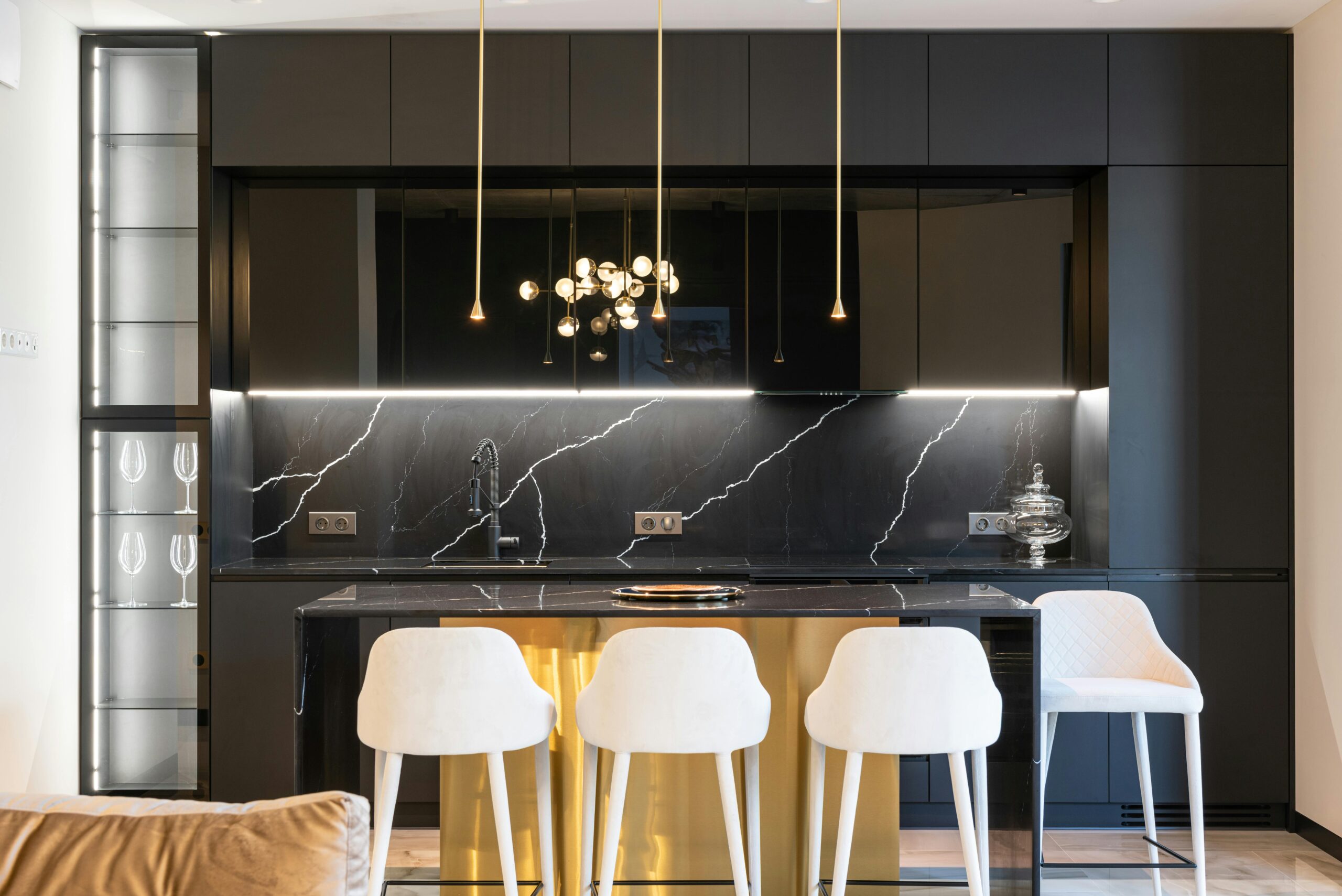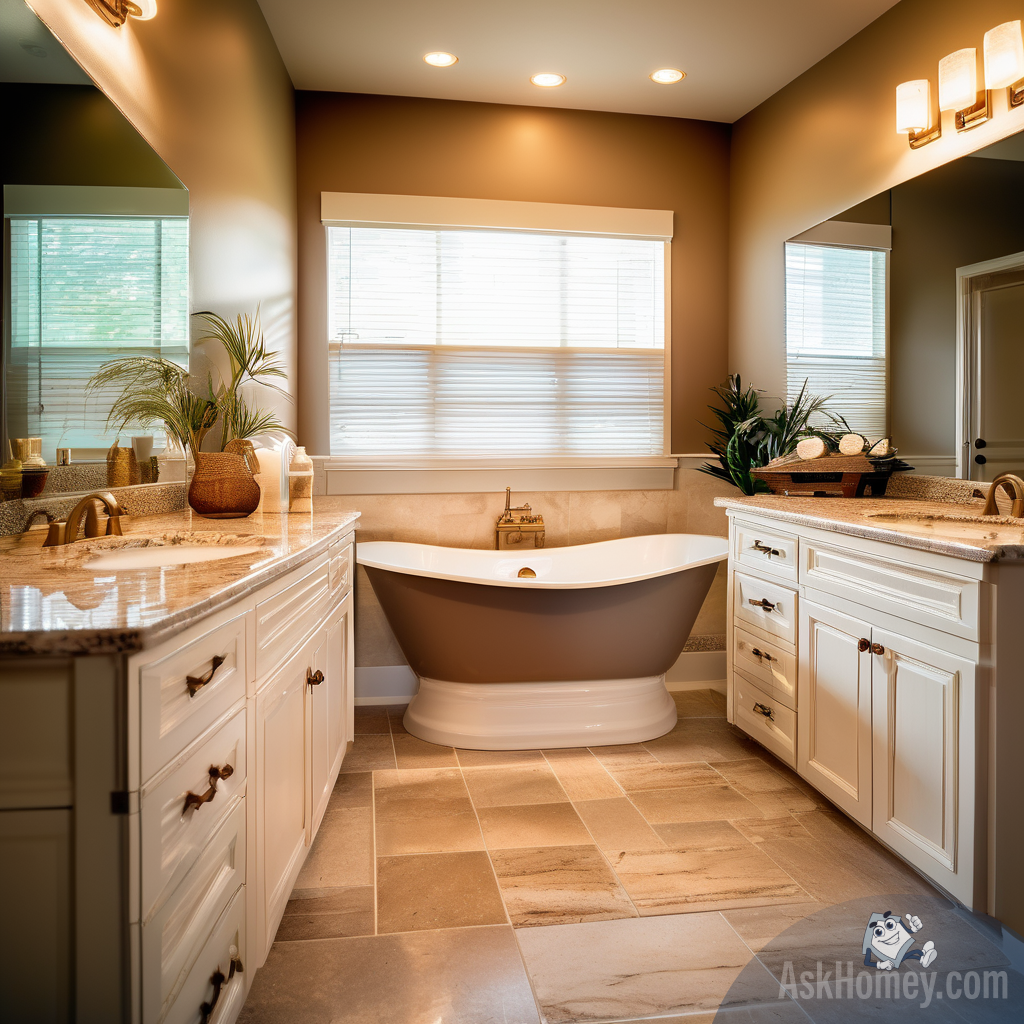The era of all-white kitchens is gradually giving way to a more daring aesthetic that embraces depth, character, and personality. Dark and moody kitchen designs featuring rich cabinet colors, striking countertop materials, and eye-catching lighting fixtures are gaining tremendous popularity among homeowners and designers alike. This shift toward bolder kitchen spaces reflects a broader desire for interiors that evoke emotion and create distinctive environments for cooking, gathering, and entertaining. In this article, we’ll explore how to masterfully incorporate deep hues, dramatic elements, and statement pieces to create a sophisticated kitchen that stands apart from the predictable brightness of traditional designs.
The Psychology of Dark Kitchen Spaces
There’s something inherently inviting about a dark kitchen that might seem counterintuitive at first. While light kitchens reflect an airy, clean aesthetic, dark kitchen cabinet ideas tap into our desire for comfort, luxury, and intimacy. Dark colors create a sense of enclosure that can actually make larger kitchens feel more welcoming and cozier. The psychology behind moody kitchen design trends suggests that these spaces encourage lingering conversations and slower, more mindful food preparation. Deep blues, blacks, and forest greens create a backdrop that allows other elements to shine while establishing a strong foundational character for the room. Visualize your dream dark kitchen using tools like AskHomey to see how different color palettes might transform your space before committing to this dramatic style shift.
Selecting the Perfect Dark Cabinet Color
When venturing into bold color kitchen inspiration, cabinet selection becomes the cornerstone of your design. Navy blue cabinets offer timeless appeal while providing a less severe alternative to black. Deep emerald or forest green cabinets bring nature indoors and pair beautifully with brass or copper hardware. For those seeking maximum impact, matte black cabinets create a strikingly contemporary statement that can be softened with natural wood accents or textural elements. Charcoal gray offers a middle ground for homeowners hesitant to go completely dark while still delivering visual weight and sophistication. Consider two-tone approaches as well—perhaps dark lower cabinets grounded by lighter upper elements, creating balance while maintaining the moody aesthetic you desire.
Countertops That Command Attention
Dramatic countertops in kitchen design serve as the perfect complement to dark cabinetry. Veined marble with bold patterns creates natural artwork against dark backgrounds, while the high contrast becomes immediately eye-catching. Dark granite or soapstone countertops with matte finishes extend the moody narrative while introducing different textures. For a truly spectacular statement, consider waterfall edges that cascade dramatically to the floor, emphasizing the beauty of the stone. White quartz against dark cabinets provides classical contrast, while butcher block sections can introduce warmth to prevent the space from feeling cold or austere. The interplay between dramatic countertops and kitchen cabinetry creates a layered, sophisticated environment that feels intentionally curated rather than simply constructed.
Illuminating Dark Kitchens with Statement Lighting
When working with darker elements, statement lighting in kitchen spaces becomes not just decorative but functional necessity. Strategic illumination transforms the mood while highlighting architectural features and work areas. Oversized pendant lights or chandeliers with metallic finishes create striking focal points that draw the eye upward, especially beneficial in kitchens with dark upper cabinets. Under-cabinet lighting becomes essential for task visibility, while strategically placed track lighting can spotlight special features. Consider mixing lighting styles—perhaps industrial pendants above an island contrasted with elegant sconces near seating areas. Statement lighting fixtures with warm-toned bulbs balance the coolness inherent in many dark color schemes, creating inviting ambient light that enhances rather than fights against the deeper color palette.
Balancing Elements in Moody Kitchen Designs
The most successful moody kitchen design trends incorporate thoughtful balance between dark and light elements. Reflective surfaces like mirrored backsplashes or glass-front cabinets break up visual heaviness while maintaining the dramatic aesthetic. Open shelving displaying lighter dishware provides breathing space within dark surroundings. Window treatments should maximize natural light—consider leaving windows unadorned or using simple treatments that don’t obstruct daylight. Textural variety prevents dark kitchens from feeling flat or one-dimensional—incorporate natural wood tones, leather seating, or textured tile work. Finally, selective use of contrasting colors through accessories or small appliances creates punctuation points that prevent the space from feeling monotonous while highlighting your bold color kitchen inspiration.
Flooring Considerations for Dark Kitchens
Flooring selection becomes particularly important when implementing dark kitchen cabinet ideas. Light floors create dramatic contrast and prevent the room from feeling cavernous, while medium-toned wood provides warmth without competing with cabinetry. For those committed to the fully moody aesthetic, dark floors can create a cocoon-like environment, though this works best in spaces with abundant natural light. Pattern becomes especially important—herringbone wood installations or geometric tile work add visual interest that complements rather than competes with dramatic cabinetry and countertops.
For more tips and to connect with reliable home service professionals, follow AskHomey on Facebook and Instagram.



